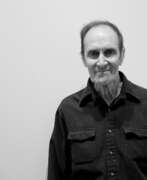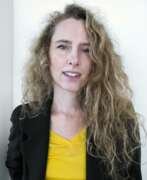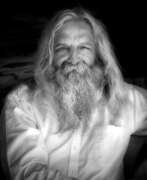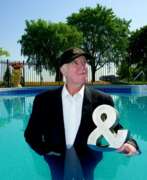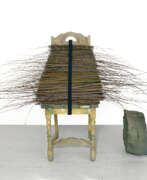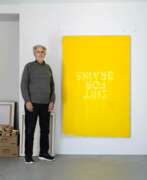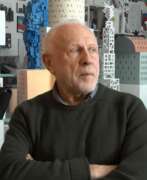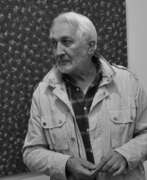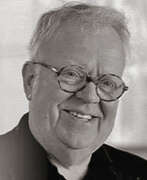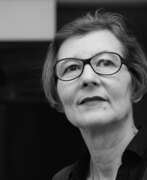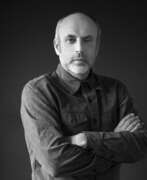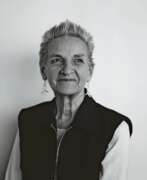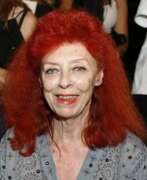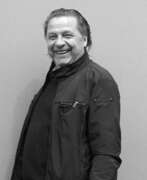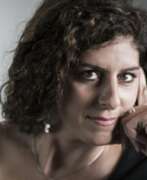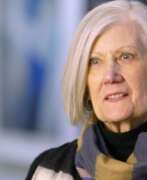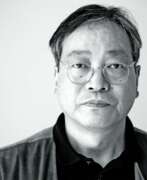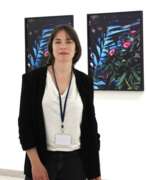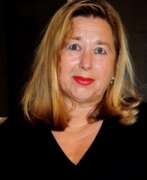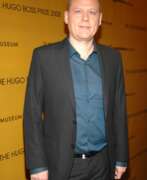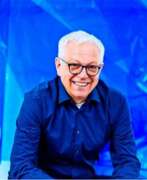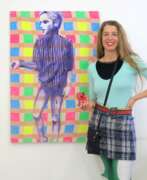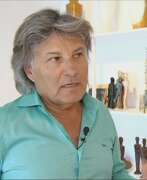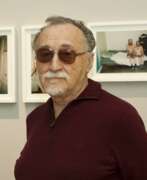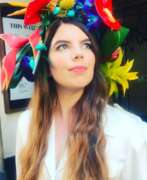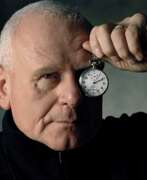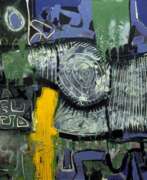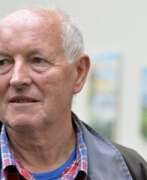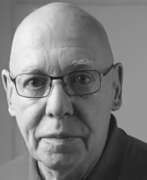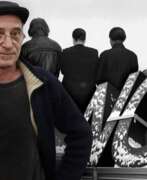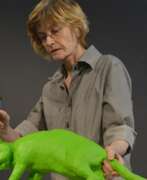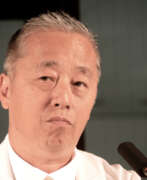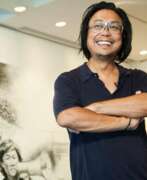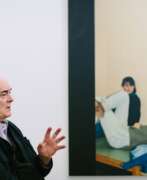Photographers Conceptual art
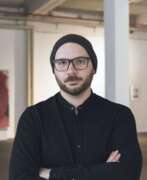

Frank Balve is a German conceptual artist.
He creates paintings, photographs, sculptures, performances and films, and his work is often inspired by literary works, from Dante to the Marquis de Sade. Balve designs his images with paint, builds them from stone or paper, stages them in front of the camera, and puts them into language. In special installations he combines his works to create spaces of experience for the viewer to work on.
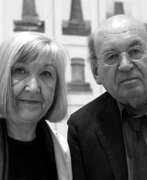

Bernhard (Bernd) Becher and Hilla Becher were German conceptual artists and photographers working as a collaborative duo. They are best known for their extensive series of photographic images, or typologies, of industrial buildings and structures, often organised in grids. As the founders of what has come to be known as the 'Becher school' or the 'Düsseldorf School' they influenced generations of documentary photographers and artists. They have been awarded the Erasmus Prize and the Hasselblad Award.
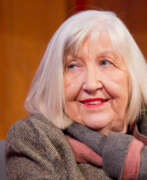

Hilla Becher (née Wobeser) was a German conceptual photographer. Becher was well known for her industrial photographs, or typologies, with longtime collaborator and husband, Bernd Becher. Her career spanned more than 50 years and included photographs from the United States, France, Germany, the Netherlands, Great Britain, Belgium, Switzerland, Luxembourg, and Italy.
Becher, alongside her husband, received the Erasmus Prize and the Hasselblad Award. The Bechers founded the Düsseldorf School of Photography in the mid-1970s.
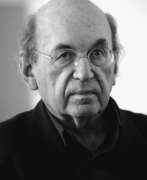

Berndt Becher was a German conceptual photographer. Becher is well known for his industrial photography.
Together with his wife and collaborator Hilla Becher won the Erasmus Prize and the Hasselblad Prize. In the mid-1970s the Bechers founded the Düsseldorf School of Photography.
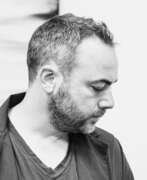

Walead Beshty is an American conceptual artist, photographer, sculptor and writer who lives and works in Los Angeles.
Born in London, Great Britain, he studied at Bard College and received a Master of Fine Arts degree from Yale University in 2002, and holds academic positions at universities across the United States.
Beschty is best known for his work in photography, but his creative interest spans a wide range, including sculpture, painting, installation and video. For example, in one of his popular works, the artist mails a series of glass windows of various sizes in cardboard boxes, and then displays the cracked and broken windows, damaged in transit, over the boxes in which they were packed.
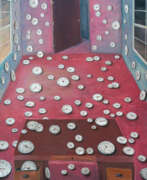

Derek Paul Boyle is a contemporary American visual artist whose work often deals with the anthropomorphism of everyday objects and absurdist interventions.
Boyle received his BFA from Emerson College in Boston and his MFA in Digital and Media Studies from Rhode Island School of Design.
Boyle has exhibited his work nationally and internationally, including exhibitions at the Museum of Modern Art in Cleveland, the Museum of Fine Arts in Boston and the Saatchi Gallery in London. His work is included in the collections of the Whitney Museum of American Art, the Museum of Fine Arts Boston, the Cleveland Museum of Art and others.
In addition to his studio practice, Boyle also teaches art and works as a visiting artist at various institutions, including the Rhode Island School of Design, the School of Visual Arts and the University of Michigan.
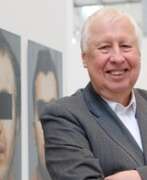

Hans-Peter Feldmann is a German visual artist. Feldmann's approach to art-making is one of collecting, ordering and re-presenting.
Hans-Peter Feldmann is a figure in the conceptual art movement and practitioner in the artist book and multiple formats.


Félix González-Torres was a Cuban-born American visual artist. He lived and worked primarily in New York City between 1979 and 1995 after attending university in Puerto Rico. González-Torres was known for his minimalist installations and sculptures composed of everyday materials such as strings of lightbulbs, clocks, stacks of paper, or packaged hard candies. In 1987, he joined Group Material, a New York-based group of artists whose intention was to work collaboratively, adhering to principles of cultural activism and community education, much of which was influenced by the artist's experience as an openly gay man. González-Torres is known for having made significant contributions to the field of conceptual art in the 1980s and 1990s. His practice continues to influence and be influenced by present-day cultural discourses.


Ekkeland Götze is a German painter, printmaker and conceptual artist. After a training as a screen printer he educated himself as an industrial engineer through a correspondence course. Götze painted in his spare time, but he was not allowed to exhibit because of regulations in East Germany - formally he was a printmaker, not a painter. Because of these restrictions he filed an application for an exit permit 1985 which was granted in 1988. In 1989 Götze started to work on a project called "Erde" ("Earth"). He collects soil samples at extraordinary sites of human history around the world and applies them to paper, lime mortar or other backgrounds, making use of a standardized, self-developed technique he calls "terragraphy": He grinds the soil, mixes it with a binder and then applies it making use of a technique similar to screen printing. All backgrounds are square and of identical size. For each site the resulting works of art are given an individual name that reflects the importance of the site. According to Götze, the pictures capture th "spirit and energy" of the place where the soil was gathered. Götze runs a studio in Sendling. He is a member of the Neue Gruppe, an association of Munich artists regularly exhibiting at the Haus der Kunst museum. In 2018 Götze has been awarded the Seerosenpreis, a yearly award assigned to visual artists by the city of Munich.
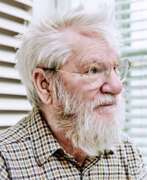

Daniel Graham was an American visual artist, writer, and curator in the writer-artist tradition. In addition to his visual works, he published a large array of critical and speculative writing that spanned the spectrum from heady art theory essays, reviews of rock music, Dwight D. Eisenhower's paintings, and Dean Martin's television show. His early magazine-based art predates, but is often associated with, conceptual art. His later work focused on cultural phenomena by incorporating photography, video, performance art, glass and mirror installation art structures, and closed-circuit television.


Candida Höfer is a German photographer. She is a former student of Bernd and Hilla Becher. Like other Becher students, Höfer's work is known for technical perfection and a strictly conceptual approach. From 1997 to 2000, she taught as professor at the Hochschule für Gestaltung, Karlsruhe. Höfer is the recipient of the 2018 Outstanding Contribution to Photography award, as part of the Sony World Photography awards. She is based in Cologne.
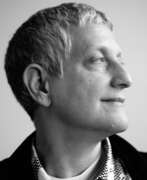

Roni Horn is an American visual artist and writer. The granddaughter of Eastern European immigrants, she was born in New York City, where she lives and works. She is currently represented by Xavier Hufkens in Brussels and Hauser & Wirth.
Horn has been intimately involved with the singular geography, geology, climate and culture of Iceland.


Magdalena Jetelová is a Czech installation artist and land artist, who has achieved international acclaim. Known mainly for her environmental installation works, Jetelová combines light, architecture, photography, sculpture, and installation to explore the relationship between humans, objects, and space. Her work has been exhibited in various prominent galleries internationally such as Museu d'Art Contemporani de Barcelona, Tate Gallery London, Museum of Modern Art, 21er Haus, and the Martin-Gropius-Bau. Her work is also in the collection of Hirschorn Museum, the Centre Pompidou, and the Museum Ludwig.
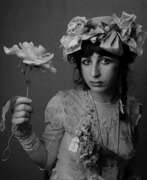

Colette Justine, better known as Colette Lumiere, is a Tunisian-born, American multimedia artist known for her pioneering work in performance art, street art, and her use of photography to create photographic tableau vivant. She is also known for her work exploring male and female gender roles, use of guises and personas, and for soft fabric environments, where she often appears as the central element.
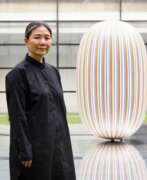

Kimsooja, real name Kim Soo-ja, is a South Korean and American media artist living and working in New York and Seoul.
After studying art in Seoul, Kimsooja studied lithography at the École Nationale Supérieure des Beaux-Arts in Paris, then apprenticed at the New York Museum of Modern Art.
Her early works used fabric, which quickly became her favorite medium: the artist began creating large textile collages. In her work, Kimsooja combines performance, film, photography and installation with the use of textiles, light and sound. The artist explores issues relating to the human condition, as well as addressing issues of aesthetics, culture, politics and the environment.
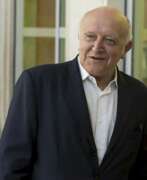

Bertrand Lavier is a French conceptual artist, painter and sculptor, belonging to the post-readymade era, inspired by the Duchampian legacy and the Nouveau réalisme, the artistic movement created by the art critic Pierre Restany in 1960. Lavier studied at the École Nationale Supérieure d'Horticulture in Versailles, France in 1968-1971.


Richard Julian Long is an English sculptor and one of the best-known British land artists.
Long is the only artist to have been short-listed four times for the Turner Prize. He was nominated in 1984, 1987 and 1988, and then won the award in 1989 for White Water Line.
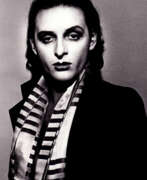

Urs Lüthi is a Swiss eclectic conceptual artist.
He graduated from the School of Applied Arts in Zurich and has experimented with various styles and techniques, including photography, sculpture, performance, silkscreen, video and painting.
Urs Lüthi is known for placing his body and alter ego at the center of his artworks, trying to understand himself and question reality.
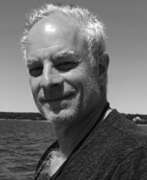

Russell Maltz is a conceptual sculptor, artist and photographer living and working in New York, USA.
Maltz creates work using a wide range of materials, from concrete cinder blocks, glass and clothespins to found wood panels, PVC pipes, paper and swimming pool; he collaborates with construction companies and enjoys photographing art-like industrial trash.
The artist paints the plywood panels in part monochrome and then assembles sculptural objects from them, with some parts visible and others hidden. Maltz also finds abandoned and unseen building materials, which he transforms into works of art with paint and minimal intervention.
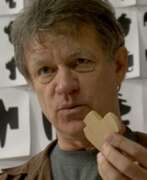

Allan McCollum is a contemporary American artist who lives and works in New York City. In 1975, his work was included in the Whitney Biennial, and he moved to New York City the same year. In the late 1970s he became especially well known for his series, Surrogate Paintings.
He has spent over fifty years exploring how objects achieve public and personal meaning in a world caught up in the contradictions made between unique handmade artworks and objects of mass production, and in the early 1990s, he began focusing most on collaborations with small regional communities and historical society museums in different parts of the world. His first solo exhibition was in 1970 and his first New York showing was in a group exhibition at the Sidney Janis Gallery in 1972.
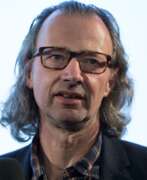

John Miller is an American artist, sculptor, writer, critic, and musician who lives in New York and Berlin.
He studied at the California Institute of the Arts and worked as a gallery manager for the Dia Art Foundation. Miller is currently a professor of professional art history practice at Barnard College.
His work includes photographs, installations, live mannequin exhibitions, and videos in response to current political events and sentiments. Miller has also authored critical works on representation in art.
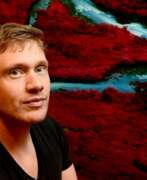

Richard Mosse is an Irish conceptual documentary photographer living in New York and Ireland.
He has a BA from King's College London and an MA in Photography from Yale University and has worked in Iraq, Iran, Pakistan, Palestine, Haiti and the former Yugoslavia. Moss' photographs and films document armed conflicts, humanitarian crises and environmental crimes.
Moss works to visualize events, technologies and systems that often remain invisible, using a camera equipped with thermal imaging technology that obscures, abstracts and brings violence to the fore.
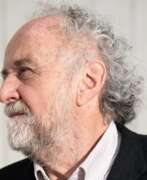

Maurizio Nannucci is an Italian multidisciplinary artist living and working in France and Germany.
Nannucci is a prominent representative and key figure of the Italian analytical and conceptual art movement, he has been exploring the relationship between art, language and image since the 1960s. In 1968 he founded Exempla and Zona Archives Edizioni in Florence, and later became one of the founders of the Zona Artists Center.
Maurizio Nannucci is a tireless experimenter, since the 1990s he has been creating ecological installations in collaboration with internationally renowned architects, he has owned numerous neon and sound installations.
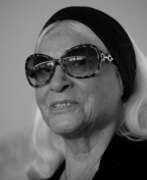

Natalia Lach-Lachowicz was a Polish artist who worked with paint, photography, drawing, performance, and video art. Sean O'Hagan, writing in The Guardian in 2017, described her as "a neglected early-1970s Polish-born pioneer of feminist avant garde image making".
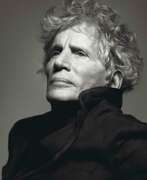

Dennis Oppenheim was an American conceptual artist, performance artist, earth artist, sculptor and photographer. Dennis Oppenheim's early artistic practice is an epistemological questioning about the nature of art, the making of art and the definition of art: a meta-art that arose when strategies of the Minimalists were expanded to focus on site and context. As well as an aesthetic agenda, the work progressed from perceptions of the physical properties of the gallery to the social and political context, largely taking the form of permanent public sculpture in the last two decades of a highly prolific career, whose diversity could exasperate his critics.
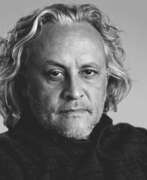

Gabriel Orozco is a Mexican artist. He gained his reputation in the early 1990s with his exploration of drawing, photography, sculpture and installation. In 1998, Francesco Bonami called Orozco «one of the most influential artists of this decade, and probably the next one too».
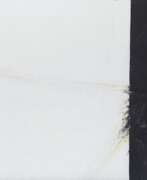

Alex Perweiler is an American artist known for his multidisciplinary practice.
Perweiler's work often explores themes related to popular culture, consumerism and the role of the artist in contemporary society.
Perweiler creates installations and sculptures to complement his experimental photographic works. In them, he takes photographs without a camera, exposing sheets of photographic paper to light and leaving them unsupported. The resulting images are abstract, vividly saturated and often monochrome, constantly changing over time.
Perweiler has exhibited his work widely in the US and abroad, including exhibitions at the Detroit Museum of Contemporary Art, the Museum of Contemporary Art in St. Louis and at the NADA Art Fair in Miami.


Ralf Peters is a contemporary German photographer.
Ralf Peters is a conceptual photographer who creates visual explorations of places and objects, often in thematic series. Playfully shifting between fantasy and reality, Peters manipulates digital images to challenge the viewer's conception of traditional photography, raising the question of whether something is a realistic image or a skillfully manipulated vision.


Gerhard Richter is a German visual artist. Richter has produced abstract as well as photorealistic paintings, and also photographs and glass pieces. He is widely regarded as one of the most important contemporary German artists and several of his works have set record prices at auction.
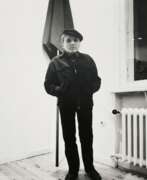

Reiner Ruthenbeck is a German conceptual artist, sculptor and photographer.
Ruthenbeck studied at the Düsseldorf Academy of Fine Arts, worked as a guest lecturer at the University of Fine Arts, and as a professor at the Münster Academy of Art. Ruthenbeck commands geometric forms, he is a master of transforming space with unconventional materials such as crumpled paper or pieces of fabric.
In his work, Ruthenbeck subverts the familiar, using minimalist objects and simple everyday materials to explore architecture, perception, and in later works, sound. The artist's work includes sculptures, objects, and conceptual pieces. Between 1968 and 1972, he created several piles and cones out of ash, slag and paper. Later, he presented utilitarian objects such as chairs, tables and suitcases, stripping them of their functionality and thus flaunting their pure forms.
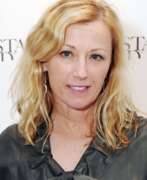

Cynthia Morris Sherman is an American artist whose work consists primarily of photographic self-portraits, depicting herself in many different contexts and as various imagined characters.
Her breakthrough work is often considered to be the collected Untitled Film Stills, a series of 70 black-and-white photographs of herself evoking typical female roles in performance media (especially arthouse films and popular B-movies). In the 1980s, she used color film and large prints, and focused more on costume, lighting and facial expression.
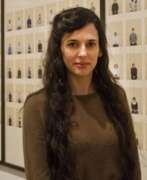

Taryn Simon is an American photographer. She is known for her conceptual photography, which explores themes of power, control, and the hidden structures that shape our world.
Simon's work often involves extensive research and collaboration with experts in various fields. Her photographs are often large-scale and meticulously composed, featuring subjects ranging from political figures and cultural icons to everyday objects and places.
Some of Simon's most famous projects include "An American Index of the Hidden and Unfamiliar," which documented hidden sites and organizations throughout the United States, and "Contraband," a series of photographs of items seized by customs officials at JFK International Airport.
Simon's work has been exhibited in major museums and galleries around the world, and she has received numerous awards and honors for her contributions to the field of photography. She continues to produce new work and is widely regarded as one of the most important photographers of her generation.


Serge Spitzer was an American artist of Romanian origin. He has worked in Jerusalem, New York and Berlin and is known for his installations, sculptures, photographs and videos.
Serge Spitzer studied at the National University of Art in Bucharest from 1969 to 1972 and then at the Bezalel Academy of Art and Design in Jerusalem from 1972 to 1974.
In his work, Spitzer has often explored the relationship between art and its context.


Mike and Doug Starn are American artists, identical twins, and artist duo. Their work is known to transgress traditional categorisation, combining separate disciplines such as sculpture, photography, architecture, painting, video and installation. The Starn's work explores themes of interconnection and interdependence.


Doug and Mike Starn are American artists, identical twins, and artist duo. Their work is known to transgress traditional categorisation, combining separate disciplines such as sculpture, photography, architecture, painting, video and installation. The Starn's work explores themes of interconnection and interdependence.


Aldo Tagliaferro is an Italian artist and photographer, representative of the Mec Art movement.
Aldo Tagliaferro's work is based on a constant analysis of the human being and his eternal personal conflict with his environment. In his works the artist critically examines the events in the social context.


Henri van Herwegen, better known by his pseudonym Panamarenko, is a Belgian artist known for his installations and objects that combined elements of science, technology, art and fantasy.
Panamarenko was an autodidact and began his career as an artist in the 1960s. His work has been shown in many exhibitions in Europe, America and Asia. He created various objects such as flying machines, submarines, wings, bicycles and more.
Panamarenko's work has used different materials including metal, plastic, textiles, glass and wood. His installations and objects were often interactive and could move or glow.
Panamarenko was one of the most influential artists in Belgium and his work is in the collections of many museums, including the Museum of Modern Art in Barcelona, the Guggenheim Museum in Bilbao and the Museum of Modern Art in Amsterdam.
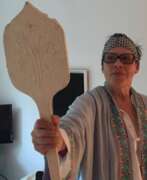

Cosima von Bonin is a German contemporary artist. Von Bonin's practice features the use of sculptures, textiles, sound, film and performances. von Bonin draws inspiration from the intellectual, artistic, and musical culture of her neighborhood in Cologne, Germany, where she lives and works.
One focus of von Bonin's artistic works is the relationship between works of art and the world of fashion, music and architecture. She often focuses on collective artistic production frequently including collaboration with other artists as well as parties, DJ sets, music performances and audio and video exhibitions. The exhibitions are of an ephemeral nature intended to reject the classical idea of the individual artistic genius.
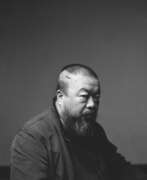

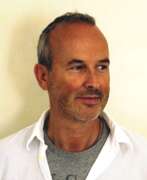

Erwin Wurm is an Austrian artist. He lives and works in Vienna and Limberg in Austria, and in New York City.
Wurm is known for his humorous approach to formalism.
Wurm's work is often critical of Western society and the mentality and lifestyle of his childhood during post-World War II Austria. Although Wurm's sculptures are humorous and ridiculous, they are actually quite serious. His criticism is playful, but should not be confused with kindness. He represents his criticism of objects, such as clothing, furniture, cars, houses, and everyday objects to his audience. Common themes in his work include not only our relationship to banal everyday objects, but also philosophers and life in postwar Austria.
